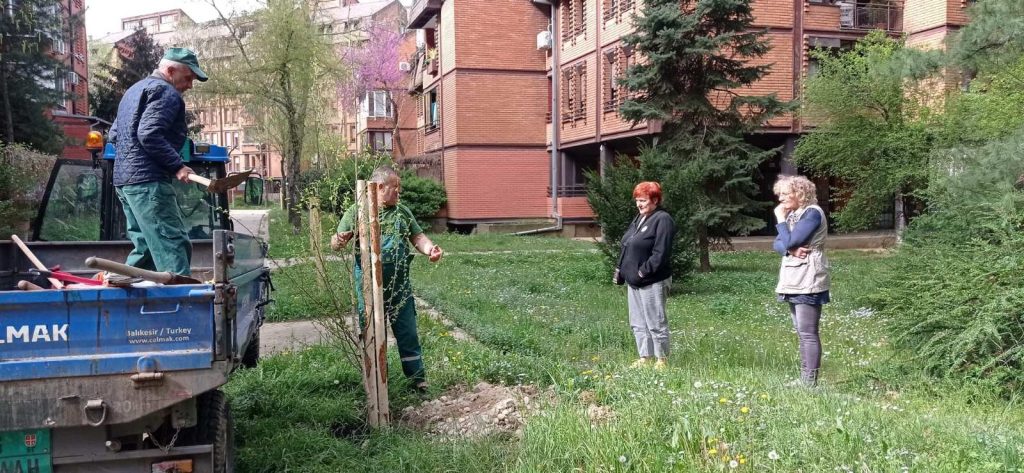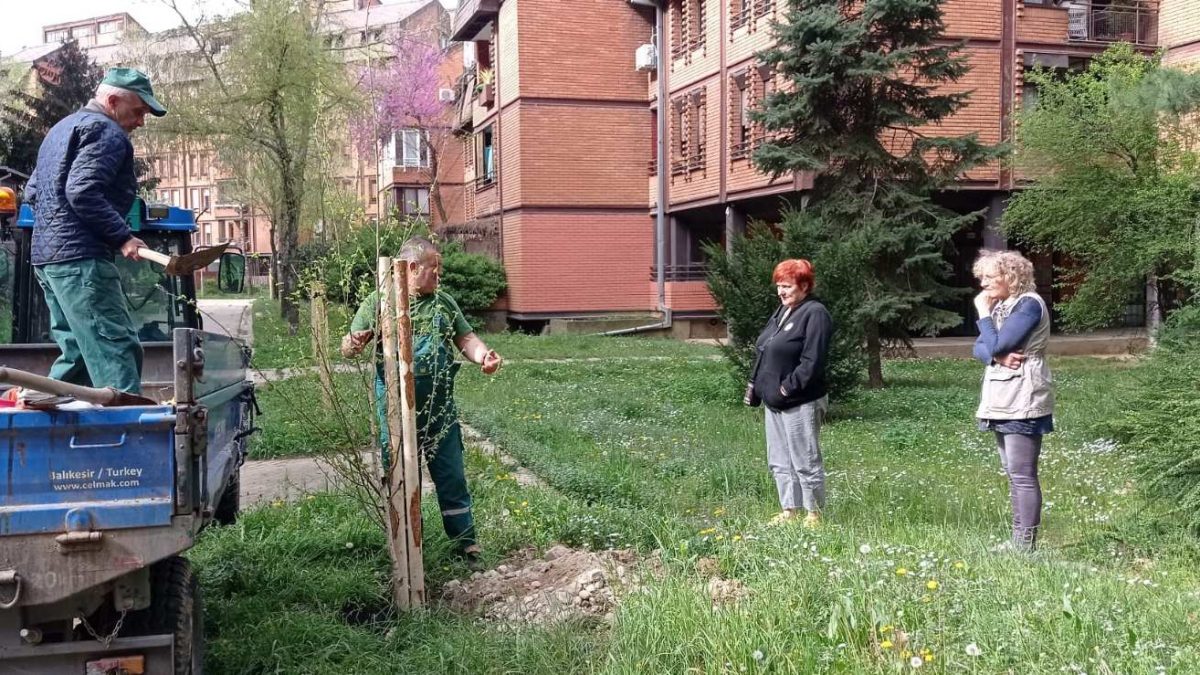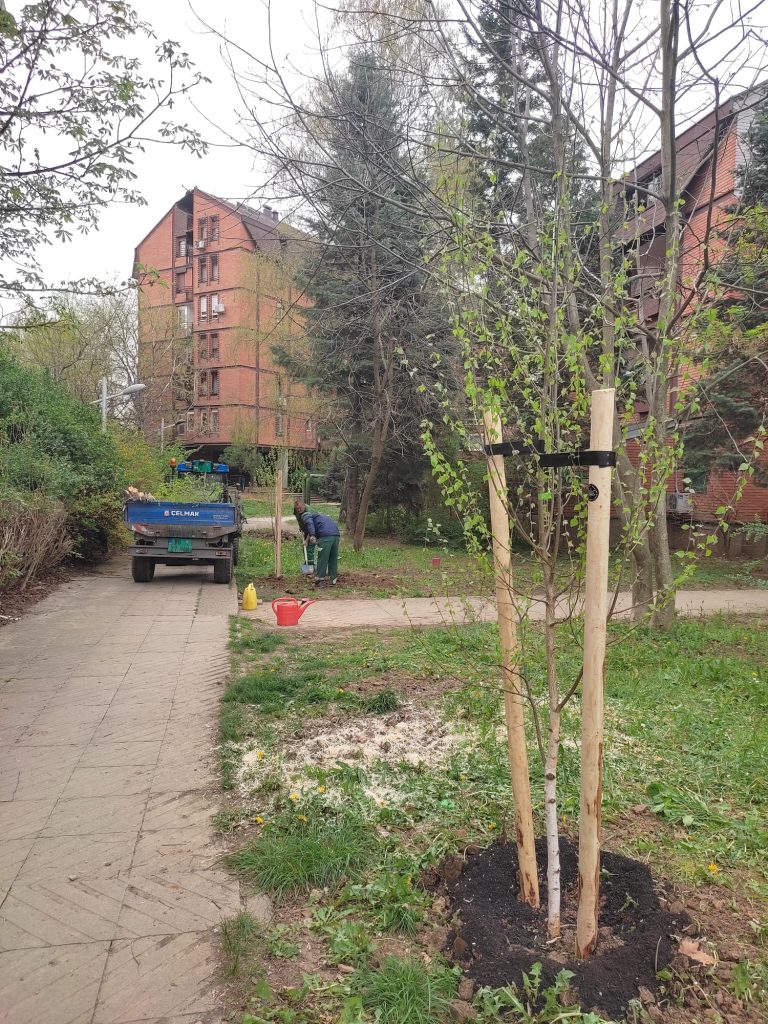Creating the Sense of Community and Place in Belgrade’s Neighborhood Cerak
In Belgrade’s neighborhood Cerak Vinogradi, on the outskirts of the Serbian capital, citizens worked hand in hand with the Utility Company “Gradsko Zelenilo” (City Greenery) to plant dozens of new trees across the local meadows and plaines.
All photos: Nataša Đurić

In the previous period, the trees in this neighborhood suffered significant damage. That’s why the Cultural Cerak Association decided to restore the tree lanes in the streets and thus restore Cerak’s reputation as one of the Belgrade urban areas that thoroughly implement NBS in urban planning.
This wasn’t the first such endeavor and partnership, but planting action was also realized in December 2023 when 10 young pine seedlings were planted on a free green area in the settlement. This latest one focused on the renewal of the green fund of eight young birches planted in March.
The actions were carried out in cooperation with the Čukarica (municipality) branch of the Zelenilo UC, and each planting is in line with the original horticulture projects for the settlement.
All seedlings were donated to the settlement by the association Kulturni Cerak, to preserve the context where the streets were named after the types of trees planted in them.

These actions naturally go in line with the long history of collaboration and good co-creation practices between the citizens and local authorities and services that could serve as a model for other municipalities and cities.
Namely, Cerak Vinogradi is considered to be a modernist cultural heritage of Belgrade, having the structure, functions, and standards of housing and micro, neighborly public areas that provide the locals with all necessities for public services, health care, schooling, culture, sports, etc.
It is the only modern residential area in Serbia that was declared a cultural asset in 2019.
The carefully designed settlement foresaw the growing needs of a diverse population aiming to provide each group and individual a sense of owning and belonging to the place.
The locals enjoy being witty and saying that they are local patriots, but the fact is that their involvement in all matters of public significance is admirable, they are proud and protective of their “green gold”: lots of trees, shrubs, meadows, nice shades and lots of clean air.
Unlike many urban settlements that have turned into massive dormitories people migrate in the mornings and evenings for just one function – sleep, Cerak offers morning-to-evening content creating strong bonds between its people and the place.
No wonder, the architect duo, the Marušić couple, meticulously built its design to create, not simply just a neighborhood, but a community. The story has it that the first encounter with the space of the future Cerak Vinogradi settlement enchanted the architect Melanija Marušić.
At the beginning of the year, the Women’s Architectural Association – ŽAD awarded Milenija the “Jelisaveta Načić” Lifetime Achievement Award for 2024, inspired by the personality and works of the first woman architect in Serbia. As explained, the award came to the architect Milenija Marušić for her outstanding contribution to the profession during her professional career.
The settlement was formed on the extreme outskirts of Belgrade. The realization of the project program included the construction of a new town on the hill for 15,000 inhabitants in 3,650 apartments, on a territory of 93 hectares. The author team of Darko and Milenija Marušić together with Nedeljko Borovnica for a part of the settlement Cerak 1, worked on projects at the Institute of Architecture and Urbanism of Serbia. Construction began in 1978 and lasted for 10 years.
Today, there is no traffic in the settlement, the buildings are surrounded by greenery, and many common areas have been built for the tenants.
The preserved appearance of the settlement, created in the era of late Yugoslav modernism, attracted the attention of the curators of the New York Museum of Modern Art (MoMA), who included it in the permanent collection in 2016.



